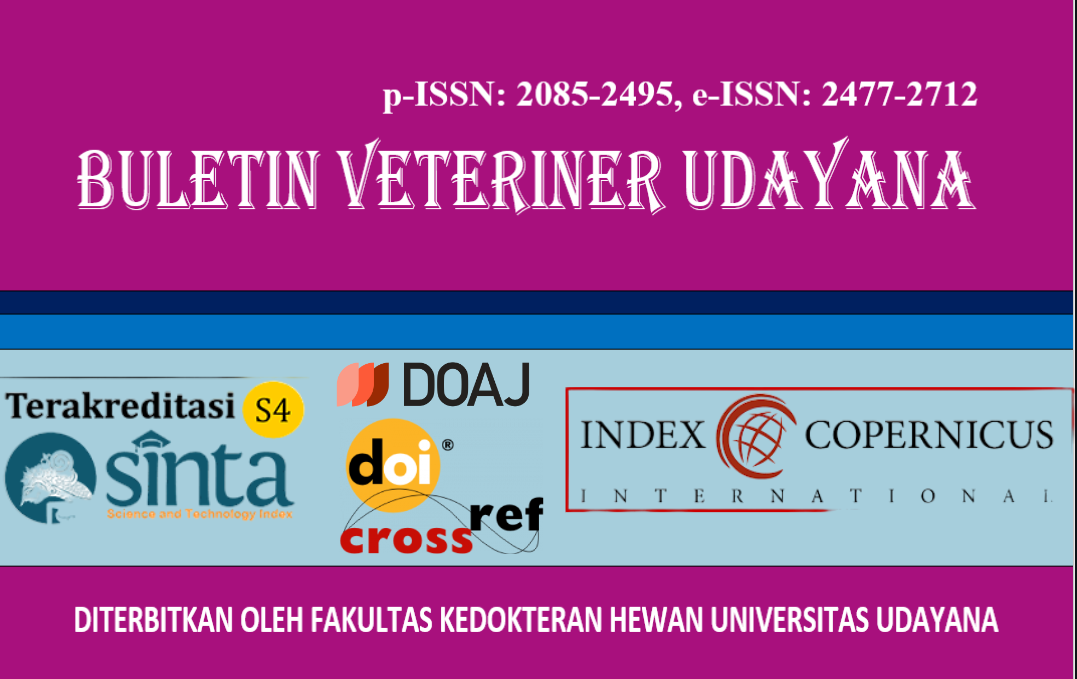COCCIDIAL INFECTION AND ITS ASSOCIATION WITH THE DEVELOPMENTAL STAGES OF QUAILS REARED ON A COMMERCIAL FARM IN BOYOLALI, CENTRAL JAVA, INDONESIA
DOI:
https://doi.org/10.24843/bulvet.2025.v17.i04.p18Keywords:
coccidiasis, quail, ageAbstract
Coccidiosis is a parasitic disease that significantly impacts economic losses in quail farming. This study aimed to evaluate the occurrence and intensity of coccidia infection and its relationship with the developmental stages of quails reared on a commercial farm in the Boyolali region, Central Java, Indonesia. One hundred fecal samples were analyzed from two different age groups: pullets (28 days old) and layers (1.5 years old). Identification of oocysts was performed using the Whitlock technique. Infection intensity was categorized as mild, moderate, or severe. Data were subjected to descriptive analysis and Chi-square calculations. The results showed that infection reached 98%, with a 100% occurrence in the pullet group and 96% in the layer group. There were differences in the infection intensity among the age groups. In the pullet group, light, moderate, and severe infections were 50%, 32%, and 18%, respectively. In contrast, light infection dominated at 94% in the layer group, with moderate and severe infections at only 2% and 4%, respectively. Statistical tests confirmed a significant relationship between quail age and the level of infection intensity (p < 0.05). Overall, these findings indicate that the occurrence and intensity of coccidia infection in young quails (pullets) are higher in comparation to adult ones, making age an important determining factor in the epidemiology and pathogenesis of coccidiosis in quail populations.




